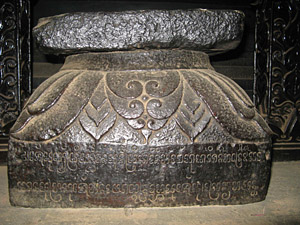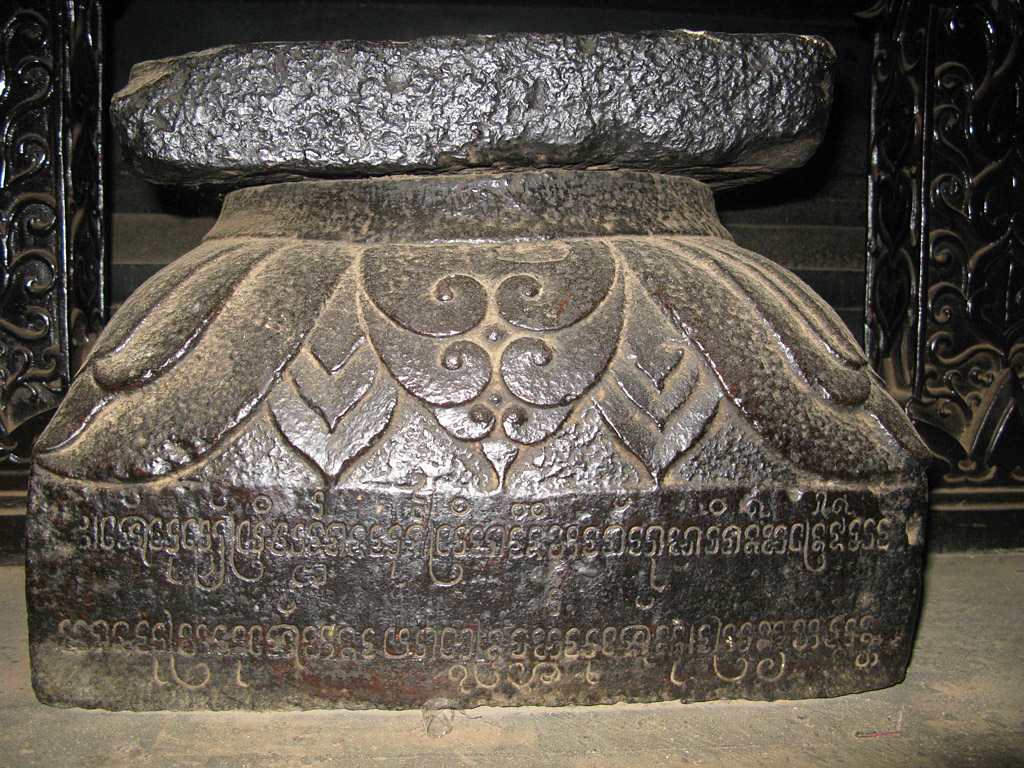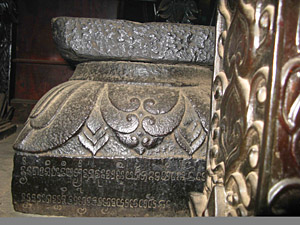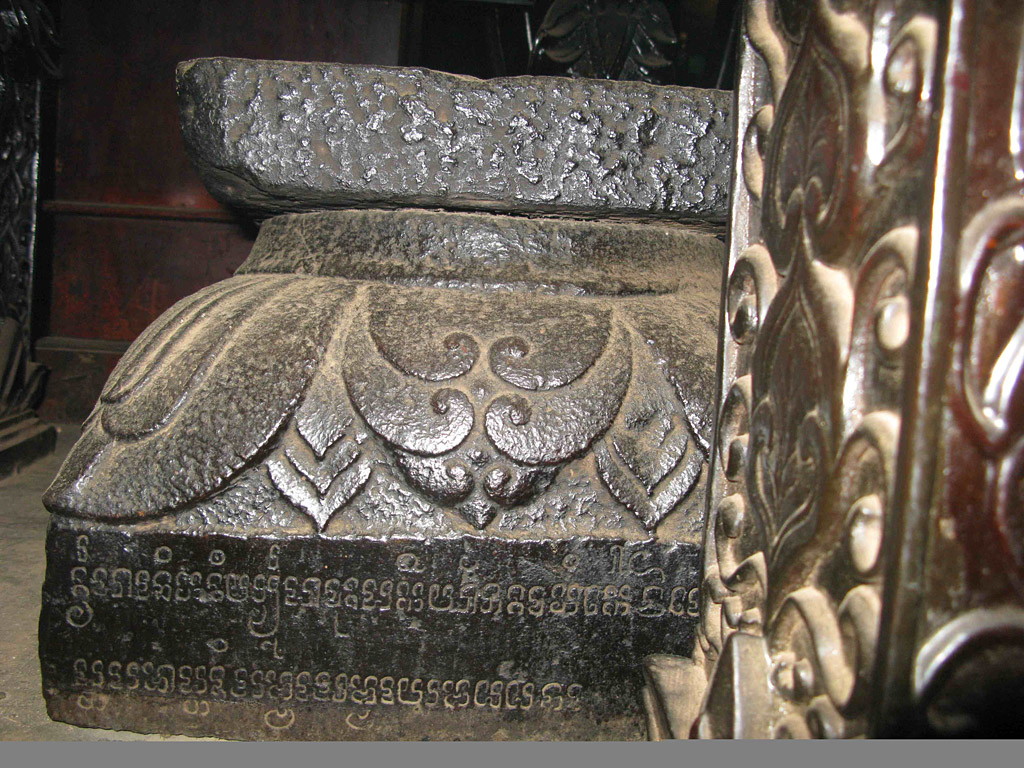Corpus of the Inscriptions of Campā




C. 180 Socle at Po Nagar
Please note: you are reviewing a preprint version of this publication. Contents here may change significantly in future versions. Scholars with specific interests are urged to consult all cited bibliography before using our texts and translations or drawing other significant conclusions.
Support Rectangular or square socle made of stone; we have not recorded its dimensions, and neither have previous scholars.
Text Two lines engraved on two faces of a square socle. Written in Old Cam.
Date 1200 Śaka (1278/9 CE).
Origin Temple of Po Nagar at Nha Trang (Khánh Hoà, Vietnam).
This inscribed socle was discovered in the course of repairs to the main tower of the temple of Po Nagar at Nha Trang in 1931 (see, BEFEO 31/1-2: 324). In Schweyer 2005a: 106, this inscription is said to have disappeared. In reality, the inscribed socle was probably already situated at that time in the cella of the main tower, where Mr. Nguyễn Văn Thích found and photographed it in 2010.
Edition(s) A summary of this inscription was presented in BEFEO 31/1-2: 324. The present edition and translation after ECIC III: 464.
The following text was edited by Arlo Griffiths.
A1 at the beginning of the inscription, remains are visible of the same quatrefoil liminal sign that we also find, for instance, at the beginning of C. 123. There appears to be sufficient space for a additional sign such as the one that precedes the quatrefoil at the beginning of C. 123, but no trace of it is visible on the photos at our disposal. — B1-B2 kauṭhāre[śvarī ... sama]sta samāpta ◇ an indeterminate number of signs is blocked from view on the photo. Our restitution kauṭhāreśvarī is based on the inscriptions C. 30 A3, ll. 2-3 and C. 32, face A, ll. 1 and 2; the restitution samasta is inspired by the instance of the expression samasta samāsta that has been read in C. 22, face A, l. 16, although we must note that, following the EFEO estampage n. 1073, we propose to read there samasta samāpta, as in the present case.
Translations
English
His majesty the half-king, heir Śrī Harijita, man of Humā Virān Manraum̃, is the greatest son of the king P.P.T.R. Indravarman, my master. He has completed an inner house, built with projections/doors (niryūha), (and) offered it to the venerable Lady of Kauṭhāra. All was accomplished in heaven-heaven-twins-moon (1200 Śaka = 1278/9 C.E.).
French
Sa majesté le demi-roi, héritier Śrī Harijita, homme de Humā Virān Manraum̃, est le meilleur des fils du roi P.P.T.R. Indravarman, mon maître. Il a achevé une maison intérieure, construite avec saillies/portes (niryūha), (et) l'a offerte à la vénérable Dame de Kauṭhāra. Tout fut accompli en ciel-ciel-jumeaux-lune (1200 Śaka = 1278/9 de n. è.).
Commentary
Secondary Bibliography
- BEFEO 31/1-2: 324
- Schweyer 2005a: 106.



“Half-king” is a hyper-literal translation of arddharāja, a term that we do not find elsewhere in Cam epigraphy, although it is found in contemporary Javanese inscriptions (PKMN: 116 and 165).
The term antargṛha is attested three times elsewhere, namely in C. 92, face A, ll. 11 and 12. There it indicates an object made of sandalwood weighing 2 bhāra and 9 tul (i.e. between 100 and 500 kg in weight following the chosen standard). This object is decorated with gold and silver. In K. 470, a Khmer inscription dated from 1249 Śaka (IC vol. II, p. 188), one can read padmavitāna saṅkū phsam saṁrit nu saṁrap bhāra praṁpvan “un dais en (argent) blanc et bronze avec accessoires pesant neuf bhāra” (Soutif 2009 vol. II: 144). The fact that inscriptions C. 92 and K. 470 use the measurement bhāra, the near contemporaneity of the two inscriptions, and the literal meaning of antargṛha suggest that this latter word also refers to a kind of canopy. Concerning this type of construction in Cam monuments, see Baptiste 2005, especially pp. 111-113.
niryūha must be a kind of decorative addition, but the word does not appear elsewhere in the corpus and we are unable to propose a specific identification with certainty.